Carb Cycling Meal Plan


Related products

What does Carb Cycling Meal Plan mean?
In the pursuit of optimal physical fitness and health, carb cycling has emerged as a strategic nutritional approach. This method involves varying carbohydrate intake on a daily or weekly basis, based on activity levels and personal health goals. The carb cycling meal plan is designed to maximize the benefits of carbohydrates when the body needs them the most while minimizing the potential drawbacks during periods of lower activity.
Carb cycling is a dietary approach where individuals alternate between high-carb and low-carb days. This fluctuation is believed to encourage the body to burn fat as its primary fuel source on low-carb days, while high-carb days are meant to replenish glycogen stores and support muscle growth and recovery. It's a diet plan that has been adopted by athletes, bodybuilders, and fitness enthusiasts aiming for body composition goals.
Scientific Basis
The scientific rationale behind carb cycling rests on its ability to manipulate the body's metabolism. On high-carb days, insulin sensitivity is at its peak, especially post-workout, allowing for efficient glucose uptake by muscle cells. On low-carb days, the body shifts to using stored fat for energy, which can contribute to fat loss. Studies have also explored the psychological benefits of carb cycling, suggesting that the variation in diet can help maintain motivation and adherence to dietary goals.
Types of Carb
Carb cycling schedules can be highly personalized. Some individuals may opt for a weekly cycle, where they consume a higher carbohydrate intake on days they perform high-intensity workouts and lower carbohydrates on rest or light activity days. Others may follow a daily cycle, adjusting their carb intake on a day-to-day basis. The choice of schedule can be influenced by personal preferences, lifestyle, and specific fitness goals.
Setting Up Your Carb Cycling Plan
The carb cycling meal plan is a nuanced approach to nutrition that alternates between high-carb and low-carb days, aiming to match the body's need for glucose or energy with its most active periods. Devised to optimise metabolic flexibility and energy utilisation, carb cycling is not a one-size-fits-all model and requires a tailor-made approach to determine individual calorie and macronutrient needs.
To establish a carb cycling meal plan, an initial assessment of daily caloric needs is essential. This is typically calculated based on factors such as age, gender, weight, height, and physical activity level. The Harris-Benedict equation or the Mifflin-St Jeor equation are often used by health professionals to estimate basal metabolic rate (BMR), which can then be adjusted based on activity level to estimate total energy expenditure.
Once calorie needs are ascertained, macronutrient ratios are the next consideration. Unlike traditional diets, carb cycling requires careful modulation of carbohydrate intake. High-carb days usually align with heavy training days to take advantage of the body's insulin sensitivity and to replenish glycogen stores, whereas low-carb days complement lighter training sessions or rest days, encouraging the body to utilise fat as a fuel source.
Incorporating exercise into your carb cycling plan is pivotal. Exercise, especially resistance training and high-intensity interval training (HIIT), can significantly affect how your body processes carbohydrates. On days with strenuous workouts, high-carb intake supports muscle recovery and growth, while low-carb days combined with moderate exercise can aid in fat loss and improve insulin sensitivity.
High-Carb Day Meal Plan

The high-carb day in a carb cycling meal plan is strategically placed to support recovery and replenish glycogen stores after intense workouts. Meal timing and frequency on these days are critical, with a focus on consuming carbohydrates during the anabolic window—the period shortly after exercise when muscles are primed to absorb glucose and amino acids.
A sample high-carb day meal plan would commence with a breakfast rich in complex carbohydrates, such as oatmeal paired with fruits, providing a sustained energy release. Lunch and dinner would include a balance of carbohydrates, such as quinoa or sweet potatoes, with lean proteins and fibrous vegetables, to support muscle repair and growth.
Recipes for high-carb meals and snacks need not be mundane. A creative culinary approach can include dishes like a quinoa and black bean salad, sweet potato and chickpea patties, or a whole-grain pasta primavera. These meals are not only satiating but also rich in micronutrients, essential for overall health.
Low-Carb Day Meal Plan

A low-carb day meal plan within a carb cycling approach is pivotal for stimulating fat loss and enhancing insulin sensitivity. By reducing carbohydrate intake on specific days, the body is encouraged to utilize fat as its primary fuel source. This strategic approach to dietary planning requires careful consideration of meal timing and composition to maximize benefits.
Adjusting Meal Timing for Low-Carb Days
On low-carb days, adjusting meal timing can play a crucial role in maximizing the body's fat-burning capabilities. It's commonly recommended to consume a higher proportion of daily carbohydrates around periods of physical activity, even on low-carb days, to support workout performance and recovery. This method aligns with the body's natural metabolic rhythms, ensuring energy levels remain stable throughout the day.
A sample meal plan for a low-carb day may start with a breakfast focused on proteins and healthy fats, such as scrambled eggs with spinach and avocado. Lunch could consist of a lean protein source like grilled chicken with a variety of non-starchy vegetables, and dinner might feature a similar composition, perhaps with fish as the protein source. Snacks throughout the day should also be low in carbohydrates, focusing instead on foods like nuts, seeds, and cheese.
Recipes for Low-Carb Meals and Snacks
Recipes for low-carb meals and snacks can be both nutritious and flavorful. Options may include zucchini noodles with pesto and grilled shrimp, cauliflower rice stir-fry with a variety of vegetables, or a turkey and cheese roll-up. Snacks might consist of celery sticks with almond butter or a small portion of Greek yogurt with a handful of berries. Each recipe should prioritize a balance of macronutrients, with a focus on healthy fats and proteins to compensate for the lower carbohydrate intake.
Tips for Success with Carb Cycling
Carb cycling is a dietary approach that requires diligence and adaptability. While the benefits of alternating carbohydrate intake can be significant, individuals often encounter challenges such as cravings and social dining. Success with carb cycling necessitates strategies to handle these challenges effectively.
How to Handle Cravings and Manage Hunger
Managing cravings and hunger is a cornerstone of adherence to a carb cycling meal plan. Implementing a high-protein intake on low-carb days can help satiate hunger and reduce cravings. Inclusion of fiber-rich vegetables and healthy fats can also provide a feeling of fullness. Moreover, allowing for strategic, controlled indulgences can help mitigate the psychological strain of strict dietary restrictions.
Strategies for Dining Out and Social Events
Dining out and attending social events on a carb cycling plan requires foresight and planning. One can opt for restaurants with customizable menu options, allowing for a low-carb meal composition. At social events, focusing on protein and salad options while steering clear of high-carb offerings can help maintain one's meal plan. Open communication with hosts about dietary preferences can also facilitate better choices.
Adjusting Your Plan Based on Progress and Feedback
Adaptability is key in a carb cycling plan. Monitoring progress through regular check-ins on weight, body composition, and energy levels can inform necessary adjustments. Feedback from the body's responses to different carb intake levels is critical for tailoring the diet to one's unique metabolic needs.
Potential Challenges and Solutions
Embarking on a carb cycling meal plan can present various obstacles, from physiological to lifestyle constraints. Identifying these potential challenges and providing solutions is critical for individuals to maintain the diet effectively and achieve their health and fitness goals.
Common Obstacles in Carb Cycling and How to Overcome Them
One of the most prevalent challenges in carb cycling is maintaining consistency. Fluctuations in daily carbohydrate intake can lead to energy variances, which may affect mood and motivation. To overcome this, individuals can start with a less aggressive carb cycling plan to allow the body to adjust gradually. Additionally, maintaining a food diary can aid in tracking and managing these changes more systematically.
How to Modify the Plan for Vegetarians and Vegans
Vegetarians and vegans might find it challenging to implement a carb cycling plan due to the high carbohydrate content in plant-based diets. However, with careful planning, it is possible to adapt the plan. Incorporating plant-based proteins that are lower in carbohydrates, such as tempeh, seitan, and certain legumes, can help balance the macronutrient distribution. Nutrient-dense, low-carb vegetables like leafy greens, as well as high-fat foods like avocados and nuts, can also be staples in a vegetarian or vegan carb cycling plan.
Solutions for Those with Specific Dietary Restrictions or Allergies
Individuals with specific dietary restrictions or allergies may find carb cycling particularly daunting. Customization is key here. Gluten-free, dairy-free, or nut-free low-carb options are abundant and can be substituted into any meal plan. For those with allergies, consulting with a dietitian to ensure a safe and effective meal plan is advisable. The use of hypoallergenic supplements might also be considered to meet nutritional needs without compromising dietary restrictions.
People also ask
What Should I Eat on a Carb Cycle Day?
On high-carb days, meals should be rich in complex carbohydrates such as whole grains, legumes, and starchy vegetables, paired with lean proteins and healthy fats. It's important to focus on fiber-rich carbs for sustained energy release. Low-carb days should include lower-carb vegetables like leafy greens and cruciferous vegetables, with a greater emphasis on proteins and fats to maintain satiety and support metabolic processes.
Is Carb Cycling Good for Fat Loss?
Carb cycling can be effective for fat loss as it varies carbohydrate intake to take advantage of the body's natural metabolic processes. On low-carb days, the body can turn to stored fat for energy, potentially leading to fat loss. However, it should be noted that individual results can vary, and maintaining a caloric deficit over time is still necessary for fat loss.
How Do I Make My Own Carb Cycling Meal Plan?
Creating a carb cycling meal plan involves several steps. First, determine your caloric needs based on your basal metabolic rate and daily activity level. Then, decide on the cycling pattern (e.g., high-carb days aligned with workout days). Plan meals around your carb cycling schedule, ensuring that you meet your nutritional needs without exceeding your caloric goals.
How Many Weeks Should I Carb Cycle?
The duration of carb cycling can vary depending on individual goals and responses to the diet. Some may see benefits within a few weeks, while others may need longer to adjust and observe changes. It's typically recommended to follow the cycle for at least 4-6 weeks before assessing its effectiveness. Continuous monitoring and adjustments are key to long-term success.
Monitoring Your Progress

When embarking on a carb cycling meal plan, tracking progress is critical to ensure that the approach is meeting your health and fitness goals. Regular monitoring can highlight the need for adjustments and help maintain motivation.
Tracking Your Meals and Nutritional Intake
Keeping a detailed food diary is the cornerstone of monitoring your nutritional intake. This should not only include the types and amounts of food eaten but also the timing of meals in relation to carb cycling schedules. Modern technology in the form of apps and online trackers can simplify this process, providing insights into macronutrient breakdown and total caloric intake.
Measuring Your Body's Response to Carb Cycling
Measuring the body's response to carb cycling involves more than watching the scale. It includes assessing changes in body composition, energy levels, workout performance, and overall well-being. Tools such as body circumference measurements, bioelectrical impedance scales, and performance metrics in the gym can provide a more comprehensive picture of how the body is responding to the diet.
When to Adjust Your Meal Plan
Adjustments to your carb cycling meal plan may be required based on the feedback your body provides. Stalling progress, decreased energy levels, or changes in lifestyle or activity can all be indicators that a reassessment of your meal plan is necessary. Regular check-ins with a nutritionist or dietitian can ensure that adjustments are made effectively and appropriately.
Conclusion
Carb cycling is a dynamic approach to nutrition that tailors carbohydrate intake to the body's fluctuating needs, potentially enhancing fitness results and metabolic health. This article has outlined how to set up a carb cycling plan, what to eat on different cycle days, and how to track your progress. The key to success lies in personalization, consistency, and adaptability.
Embarking on a carb cycling meal plan can be a transformative journey, not just for your physique but for your overall relationship with food. It teaches discipline and mindfulness about nutritional choices and their impact on the body. Remember, it is not about deprivation but about strategic nutritional timing that aligns with your body's needs.
For further reading and to deepen your understanding, consider consulting additional resources such as scientific journals, reputable health and fitness websites, and books by nutrition experts. Engaging with a community of like-minded individuals or seeking the guidance of a professional nutritionist can also provide support and enhance your journey towards long-term health.




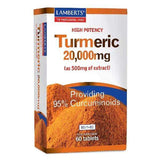




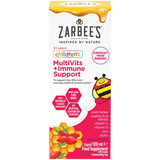

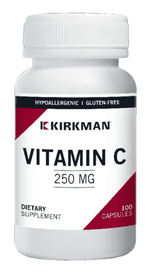
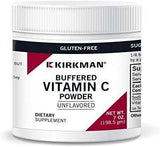












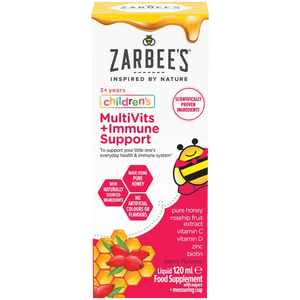










 Rated Excellent by 26,523+ Reviews
Rated Excellent by 26,523+ Reviews